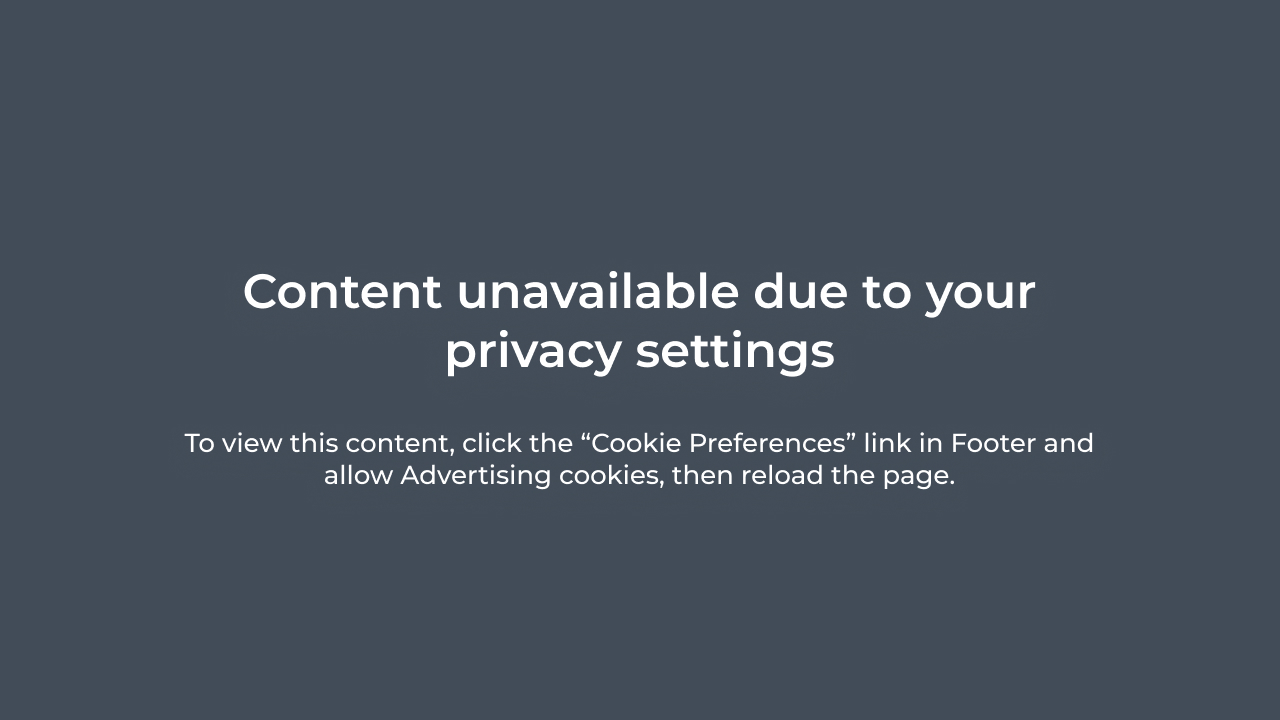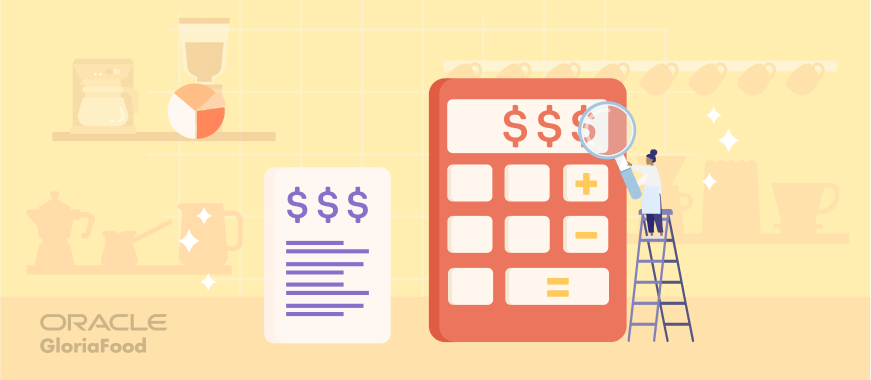- 1.What Is the Overhead Cost in a Restaurant?
- 2.Examples of Overhead Costs in a Restaurant
- 3.How to Calculate Restaurant Overhead Cost
- Step 1: Identify all your expenses
- Step 2: Use this formula
- Step 3: Compare it to average restaurant overhead costs
- 4.5 Tips to Reduce Restaurant Overhead Costs
- Renegociate your rent
- Sublease your space
- Choose energy-efficient equipment
- Work on cutting your utility bills
- 5.Final Words
If you want to make a profit at the end of each month, you need to be aware of all costs in detail. You must know where each penny goes, what bills must be paid when, and how much money is coming into your business.
In this article, we are going to be focusing on restaurant overhead costs. We’ll show you how to identify them, how to calculate them, and, most importantly, how to reduce them to get bigger profit margins.
What Is the Overhead Cost in a Restaurant?
When opening or buying a restaurant you will have three main categories of costs:
- Restaurant startup costs: these refer to the necessary expenses to get the restaurant running such as equipment, permits, legal documents, the first payment for the location, etc;
- Restaurant food costs: these consist of all the necessary materials to create your menu dishes, such as ingredients, packaging, etc;
- Restaurant overhead costs: are costs needed for operating a restaurant, such as utilities, rent, salaries, and more.
To better identify your restaurant’s overhead costs, imagine you would close your establishment for a few days to go on vacation. While you wouldn’t pay your server’s salaries or buy new ingredients, you would still have overhead expenses.
Examples of Overhead Costs in a Restaurant
To better calculate your average restaurant overhead costs, you must be aware of all expenses that contribute to them. Check out this restaurant operating costs breakdown:
- Rent or mortgage: this is usually a fixed overhead. You pay the same amount monthly unless there is a negotiation;
- Insurance: another type of fixed cost that won’t grow even if your business grows;
- Permits, licenses, and taxes: at the start, these are included in startup costs. But, as time passes, you will need to renew them, so you will have to calculate them as overhead costs;
- Utilities: this is a semi-variable overhead as you have a fixed price for them, but you will have to pay more if you do more business. For example, a bigger water bill because you have to wash more dishes;
- Maintenance: your equipment and location will need to be maintained if you don’t want accidents to happen. For example, a broken mixer can ruin an entire day of sales if you can’t prepare your menu items;
- Some salaries: the salaries, reflected on pay stubs, for staff that works in the restaurant like chefs, servers, or dish cleaners are included in the restaurant food costs as they are necessary for producing the food. The salaries for external personnel such as accountants or legal counselors are overhead expenses;
- Administrative supplies that are not directly related to the food go in this category;
- Advertising expenses: to make your restaurant known, you must invest in marketing. These are variable costs for a restaurant as you can change your strategy from month to month, according to your needs and results.
How to Calculate Restaurant Overhead Costs
At the end of each month (or more often if you feel inclined) you should sit down and have a look over your costs. This will help you notice if you spend more or less than the last time you calculated and come up with ways to save money.
Step 1: Identify all your expenses
Identifying and tracking business expenses is crucial for any business. To do so, open up your favorite program (maybe Excel?) and note down all overhead expenses at your restaurant. For example:
Rent = $12,000
Utilities = $7,000
Advertising = $5,000
Go ahead and add up all your costs. In our case:
Restaurant overhead costs = Rent + Utilities + Advertising = $24,000
Step 2: Use this formula
The most common way to calculate overhead costs is to determine the percentage of total overhead expenses compared to total sales. Use this formula:
Restaurant overhead percentage = Restaurant overhead costs/ Total monthly sales
Let’s say our total monthly sales amounted to $100,000. Then we would have:
Restaurant overhead percentage = $24,000/$100,000 x 100 = 0.24 x 100 = 24%
Step 3: Compare it to average restaurant overhead costs
The average restaurant overhead cost percentage is 35%. Practically, businesses in the food industry tend to spend 35 cents on overhead costs for every dollar they make.
If you want to increase your profit, you must aim to reduce this percentage. We’ll show you how in the next section.
5 Tips to Reduce Restaurant Overhead Costs
Some of your restaurant overhead costs are fixed, so you can’t do anything to lower them. But you can still reduce the variable and semi-variable expenses to have more money at the end of each month. Follow these tips:
1.Renegociate your rent
The rent is probably your biggest overhead cost. It can be too troublesome to find a new space for your restaurant that costs less. Not to mention that clients become accustomed to your actual location.
What you can do, instead, is negotiate with your landowner for a smaller price on the lease. You can offer to sign a contract for a longer period to soften the deal and even show them locations near you that don’t charge as much.
2. Sublease your space
If you’re not using all your kitchen spaces or you can make do for less, you have the option to sublease your space. You can also choose to let the businesses you sublet operate when your restaurant is not open to prevent overcrowding the kitchen.
Make your space available for:
- Pop-up restaurants: these are restaurants on trial, that don’t have a proper location yet and need a space to prepare their menu items;
- Ghost kitchens: virtual restaurants have no location for people to dine at, they just need a kitchen to prepare the meals for delivery;
- Food trucks: because of the small space, food truck owners may not have enough space to do all the food prep on site;
- Catering companies: they only need kitchen space and equipment to prepare the food that will be served elsewhere.
3. Pick your marketing tools wisely
To spread the word about your restaurant, you will need to invest some money. But if you do it wisely and also take advantage of free marketing tools, you will reduce your restaurant overhead costs significantly.
For example, if you use the free online ordering system from GloriaFood, you not only streamline your online ordering process, but you also get access to useful marketing features such as:
- Kickstarter module to attract first-time online clients;
- Promotions module to get people to place bigger orders;
- Autopilot module to increase customer retention through targeted email campaigns.
Moreover, you can use the system to generate an SEO and sales-optimized website that will help you rank on the first page of Google and turn visitors into customers. Follow the instructions in this video:

You can also advertise your restaurant for free by doing the following:
- Be active on social media: promote your menu items, share your promotions, use captions that invite interaction, and reply to every message and comment;
- Optimize your Google Business Profile: add a link to your menu, update your working hours, and add many photos of your food and restaurant;
- Claim your restaurant on review platforms: be active on review sites in your area and reply to every review, be it positive or negative.
4. Choose energy-efficient equipment
Utilities bills are already big, they don’t need to be made more expensive by inefficient equipment. Therefore, make a good choice from the start. Do your research and go for top-of-the-line items that are made to last for a lifetime.
They may seem like a big investment at first, but it will cost you more money if you keep replacing defective items. You get bonus points if you pick smart devices that can be either controlled from a distance or put on a timer.
This way, if someone forgets a piece of equipment on, there will be no energy waste, because it will turn itself off.
5. Work on cutting your utility bills
Water left running all the time can add up. The light left on in the freezer when nobody uses it will make your overhead costs go up. And so on. Here is what you can do to reduce restaurant overhead costs:
- Use LED lights: replace all lights in the restaurant with the more efficient LED that won’t consume as much energy;
- Turn off the lights: train your employees to always have an eye out for lights that don’t need to be on;
- Don’t overstock fridges and coolers: if there are too many items in these appliances, they will have to work more to keep the ingredients cool. Therefore, they will use more energy;
- Use pre-rinse spray valves: you will use less water to rinse the dishes before you put them in the dishwasher.
Final Words
Reserve one day at the end of each month to look over all your expenses, including restaurant overhead costs. This way, you will be able to identify any changes from month to month and implement new measures to increase your profit.
